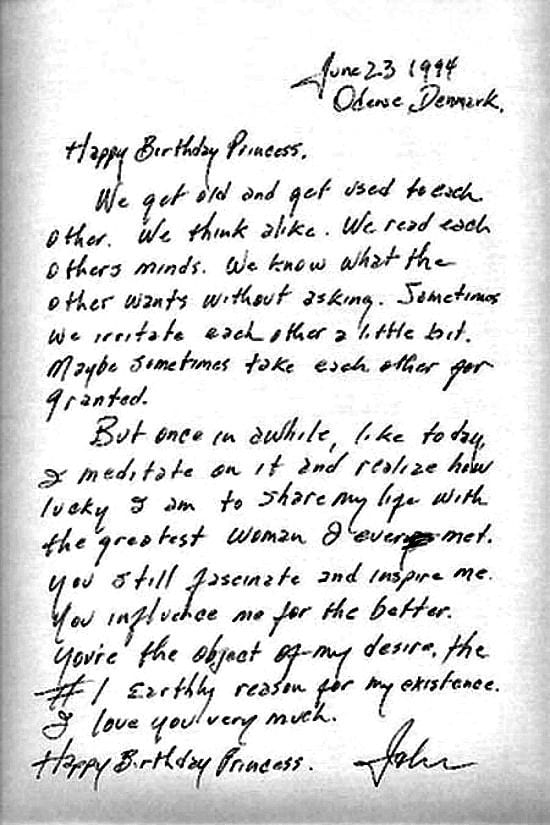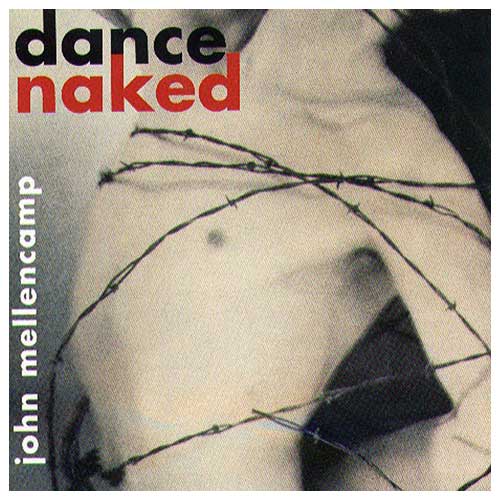This month in PopCulture25YL, we’re taking a look at the music, shows, video games, and whatever else we want from the month that was June of 1994.
At the Comic Shop
by Steve Wandling
Year of the Elseworlds
As a longtime DC Comics fan, Elseworlds stories have always been my favorite. Just in case you’re wondering, an Elseworld tale is something that takes place outside of the main DC universe continuity. It allows writers and artists the ultimate creative freedom to tell different types of stories with classic DC characters in a completely separate world. In a modern cinematic comparison, the upcoming Todd Phillips (The Hangover) film Joker is a standalone alone film that is essentially an Elseworlds tale. The film takes a classic character like the Joker and completely reinvents him in his own world that doesn’t line up with any specific comic lore or take place in any larger existing shared cinematic universe.
DC loved Elseworlds so much in 1994 that all of their Annuals were Elseworlds stories. That’s right. All 23 of the Annuals that were published in ’94 were Elseworlds. Nothing took place in the main continuity. Most of those were all also standalone single issues that recruited some of the biggest names in comics of all time. This meant that any reader could just dive in and enjoy a story from masters like Denny O’Neil and Marv Wolfman without any knowledge of the larger universe whatsoever and enjoy a fantastic comic that had its own creative engine. That’s it. Nothing else was required. Hopefully, readers would give in to the larger world, but the point is that no one had to. Elseworlds stories give readers, writers, and audiences a chance to take these beloved characters and do just about anything under the sun with them, often with fascinating results.
Ever wanted to see Catwoman, Batman, and Ra’s al Ghul face off in the 14th century? Catwoman Annual #1 has you covered. This was probably my favorite of the bunch. Often, the more bizarre the concept, the more I’m on board with a good Elseworlds tale. In this standalone, there’s a dark knight of sorts, but it’s not Bruce Wayne. He’s the son of Ra’s, and he’s a little on the rampaging murderous side of things then the hero we know and deserve. The backdrop of the story has not just one Selena, but an entire marauding band of Selenas. No matter where you put these characters—what universe, what era, or what iteration—some things still hold true. That’s the great thing about Elseworlds is how they play with audience expectation and subvert them but also surprisingly hold true to the heart of the characters.
Even in the 14th century, Catwoman and Batman have feelings for each other, regardless of who is actually under the masks. Catwoman is conflicted and is pitted against Batman, but her romantic interests prevent her from killing him. By the end of the story, it’s turned into a complete Shakespearean tragedy. No one is safe in an Elseworlds story, especially in a standalone. The stakes are much higher and a lot of the stories are easier to consume outside of the larger world for a casual reader while at the same time offering longtime fans a chance to see entirely new iterations of the characters they know and love in completely different books with entirely foreign tones.
With the comic film industry being a behemoth at the American box office 25 years later from the “Year of the Elseworlds,” there is a slow but building cry for different types of comic adaptations on the silver screen. With all due respect to what Disney’s Marvel Cinematic Universe has accomplished, all of those films have a certain tone. They figured out a very winning formula that vast audiences worldwide love. That being said, there is an audience (like myself) that is far more interested in different, more adult-themed comic adaptations making it to the screen. DC does not need to be Marvel. If the film department is listening, take a look at what was accomplished in 1994’s “Year of the Elseworlds” Annuals; take a cue from yourselves, and continue to apply it to film. In other words, keep making distinctly unique, artistic driven material like the upcoming Joker film that challenges audience expectations and allows for a new interpretation of a character that stands on its own as a piece of cinema and nothing more.
Shade the Changing Man #50
Shade the Changing Man vol. 2 issue #50 is celebrating its 25th anniversary this week, so what better time to celebrate the groundbreaking DC Comic. This second iteration of Shade was “created” by writer Peter Milligan and Chris Bachalo. (The character was originally created in the 70s by comics legend Steve Ditko.) This iteration was a much different type of book than anything that had really been seen before by DC and was the beginning of a new more cutting edge, revolutionary imprint DC Vertigo. Shade, The Changing Man, stood shoulder to shoulder in relevance with titans like Neil Gaiman (Sandman) and Grant Morrison (Animal Man). This run kicked off in 1990 and ran for 70 issues. Never mind the Ditko iteration for now, as it’s just a story Shade told himself on the way. Rac Shade was a completely different version of himself in this iteration. He was more than a little bit of a poet who jettisoned to Earth on a mission to cure insanity—from destroying Earth itself.
The influence of this book can’t be overstated yet it’s often not as remembered as Gaiman’s Sandman or Morrison’s work at the time on Animal Man and I’ve never really figured out why. It is a complicated genius book that took on topics that comic books weren’t necessarily tackling, especially in the 90s like transgenderism. Shade kept being killed off by his creators and every time he came back he would be a completely different person and often a different sex. This group of writers really changed the way people looked at comics. After #33 of Shade, the Changing Man, it was moved to the new mature imprint (and this author’s favorite) DC Vertigo. Vertigo gave Shade (and so many others) the room to explore adult themes for adult readers.
Shade’s 50th issue was the culmination of a six-part arc called “A Season in Hell.” The whole arc is really Peter Milligan’s love letter to famed poet Arthur Rimbaud (1854-1891). It is the absolute pinnacle of Milligan’s work on this series or any in my opinion and one of the greatest DC titles of all time, on Vertigo or any other imprint. Drawing comparison to the works of literary titans like James Joyce’s Ulysees.
Shade has the ability to turn into anyone. When he travels to earth he ends up in the body of a serial killer that murdered his pregnant girlfriend Kathy’s parents for a little background on where this ends up, but the literary illusions and Milligan’s love letter to Rimbaud that really made this book special. There are so many special little moments throughout the book that are just reeking with poeticism. It’s extremely romantic despite how fucked up the whole scene is. Near the start of the book, there’s a line that always stuck with me.
Shade and Kathy are in bed together and just as Shade proclaims he thinks that everything is going to be okay for them the phone rings. On the other end is the hospital. When the next panel shows said hospital the text reads: “This is where most us die, in the middle of the night…slipping away in the dark as though embarrassed by the whole thing.” The panel drawing is of a building that just says hospital. Arthur Rimbaud eat your heart out.
Shade, the Changing Man, was one of the books that not only kickstarted DC Vertigo but is one of the greatest books of the entire line to this day. Peter Milligan returned last year to the world of Shade the Changing Man for “A Second Season in Hell,” and it was a real treat to go back into that world. To spoil everything that goes down in #50 between Shade and Kathy would be the biggest travesty of all, so to celebrate it’s 25th anniversary I highly recommend you do yourself a favor, stop by the comic shop, and pick up a copy of the entire six-issue arc “A Season In Hell” in Shade the Changing Man. Tell them Rimbaud sent you.
The Quick Stop
Johnny Cash Writes June Carter a Love Letter by John Bernardy

On the occasion of June Carter’s 65th birthday, Johnny Cash wrote her this love letter. It wasn’t publicly known in 1994, but after time this surfaced and by 2015 it was noticed enough that the Daily Mail readers voted this love letter the most romantic love letter of all time. That poll is as unscientific a poll as there ever was, but it seems like a nice time to highlight the near-storybook love those two soulmates shared. So many things have been said about Cash and Carter’s story—I’d say most famously in 2005’s Walk The Line—but it’s nice when we get to see something in their own words. It makes it a little more real.
For those of you who can’t read the picture, here it is:
“Happy Birthday Princess.
We got old and got used to each other. We think alike. We read each other’s minds. We know what the other wants without asking. Sometimes we irritate each other a little bit. Maybe sometimes take each other for granted.
But once in a while, like today, I meditate on it and realize how lucky I am to share my life with the greatest woman I ever met. You still fascinate and inspire me. You influence me for the better. You’re the object of my desire — the #1 earthly reason for my existence. I love you very much.
Happy Birthday Princess.
John”
CDs On Rotation In Our 6-Disk
by John Bernardy
John Mellencamp – Dance Naked
 You may not remember this album as a whole, but the cover of Van Morrison’s “Wild Night” will stick with you in the best way. Mellencamp sings with Me’Shell Ndegeocello who also plays that crazy good bass part. Honestly, If I trace things back, this song is probably in the top five reasons I picked up the bass guitar years later. It’s not a complicated song, but it’s catchy and fun, and I wouldn’t even mind if they stretched the chorus out a few more times than they did.
You may not remember this album as a whole, but the cover of Van Morrison’s “Wild Night” will stick with you in the best way. Mellencamp sings with Me’Shell Ndegeocello who also plays that crazy good bass part. Honestly, If I trace things back, this song is probably in the top five reasons I picked up the bass guitar years later. It’s not a complicated song, but it’s catchy and fun, and I wouldn’t even mind if they stretched the chorus out a few more times than they did.
John Mellencamp wrote and produced his 13th studio album Dance Naked in 14 days to stick it to the record company who was irritated with his last album Human Wheels. The label didn’t think Human Wheels was radio-friendly enough, so Mellencamp basically said here’s some radio friendly crap that took less than two weeks if you want the easy stuff. It probably explains why there are only nine songs, why the song structures don’t take too many chances, and why the album as a whole doesn’t overly speak to me.
Yet in the lyrics, Mellencamp keeps his trademark storytelling and even loads in political messages in a protest song kind of way. It may be paint by numbers for Mellencamp, but the material in his assembly line is always high quality. If you listen to more than just “Wild Night”, this album will still treat you right.
Tony Bennett: MTV Unplugged

It wasn’t the first in the Unplugged series to win the Album of the Year Grammy—not that that’s the best mile marker in the world for actual best album, and anyway that would be Clapton two years earlier—but it’s the better of the two. Bennett oozes charm all the time, and this was back when the massively popular Tony Bennett comeback was still a new thing.
He’d made countless albums up through 1977 when he took time away from recording. Right then it’d seem like Bennett’s career was probably over. When he surfaced again in 1986, he put out a much less prolific five albums between then and this album. He was seemingly in the twilight of his career. Yet by the end of 1994, every kid my age knew who Tony Bennett was, and even if we weren’t playing his album along with the deluge of other amazing albums, we’d seen at least some of this live performance on TV. And we all knew that man was cool as shit. He may be playing songs our grandparents listened to—and he may be their age—but he exuded confidence, class, and he had style you couldn’t help but be entranced by. He’s still got it today—you can hear it in that somewhat recent duets album with Lady Gaga—but in 1994 it was a bit of a revelation.
In the height of the Grunge era, these old songs were not supposed to be cool. There’s no angst, no screaming, nothing discordant at all. These songs were clean and smooth. But they were classics for a reason. Bennett wanted to showcase the Great American Songbook for a new generation and it was a huge success.
Bennett worked with Ralph Sharon on piano, Doug Richeson on double bass, and Clayton Cameron on drums. K.D. Lang and Elvis Costello sat in on a couple of songs as well. Bennett chose did a few Irving Berlin songs, some from Johnny Mercer, and a whole bunch from the Gershwins. He even threw in “Fly Me To The Moon” a little over a year before it surfaced in Neon Genesis Evangelion. If you want to hear what made the Frank Sinatra era of music so great, pick up this album. Now that it’s been 25 years, I bet this album could work on a whole new group of kids who never thought one way or another about this music. It’s all true: this music is worth thinking about. And so is Tony Bennett.

